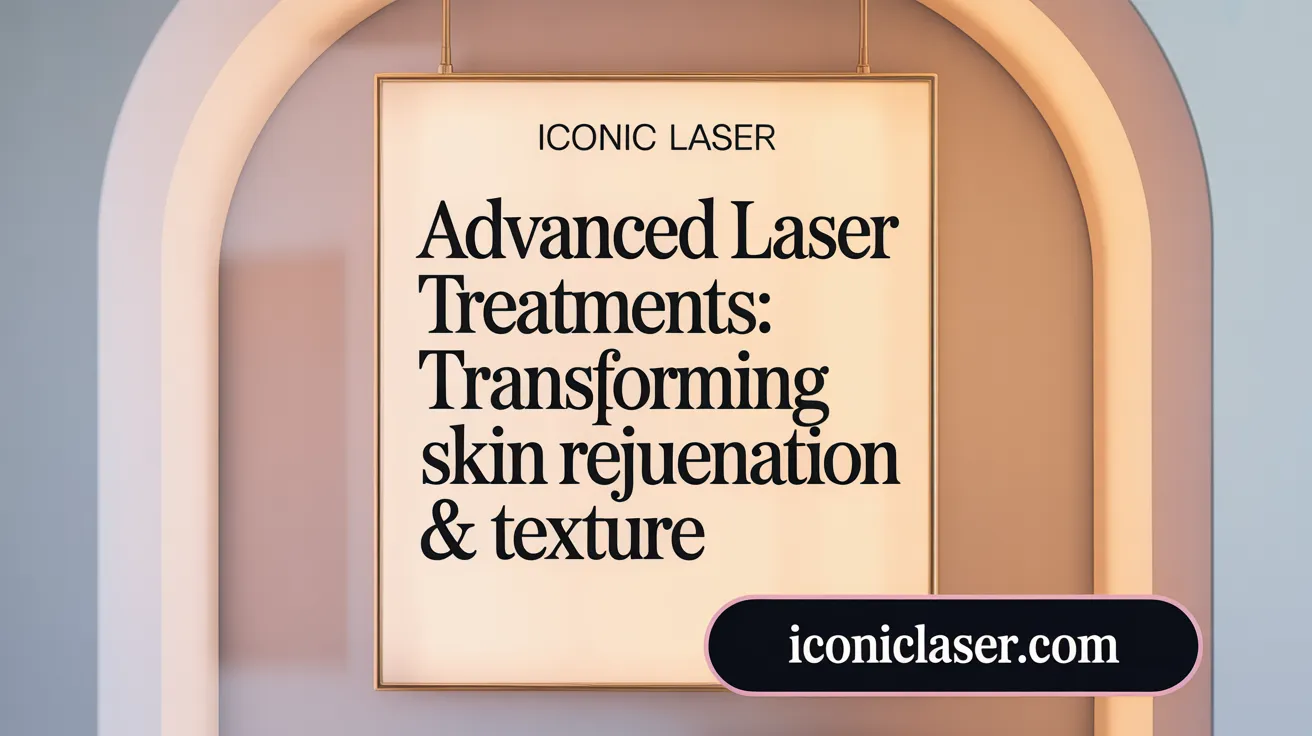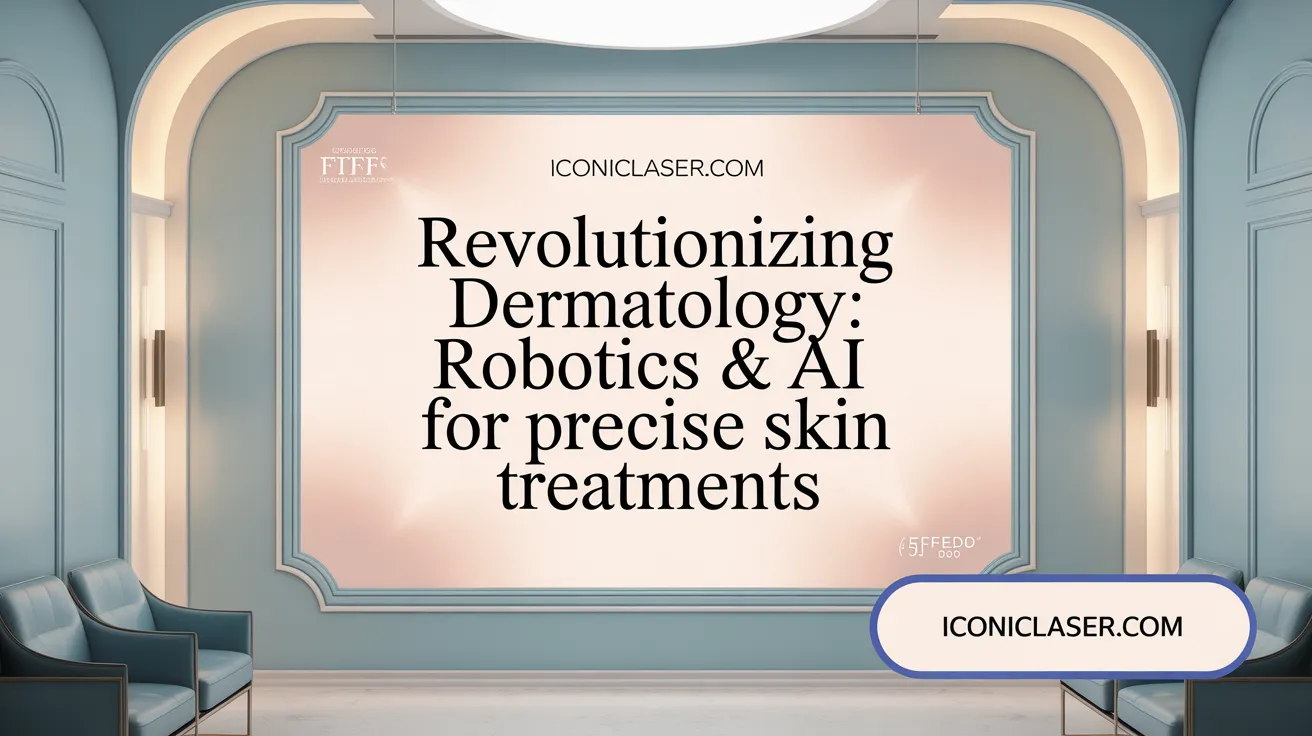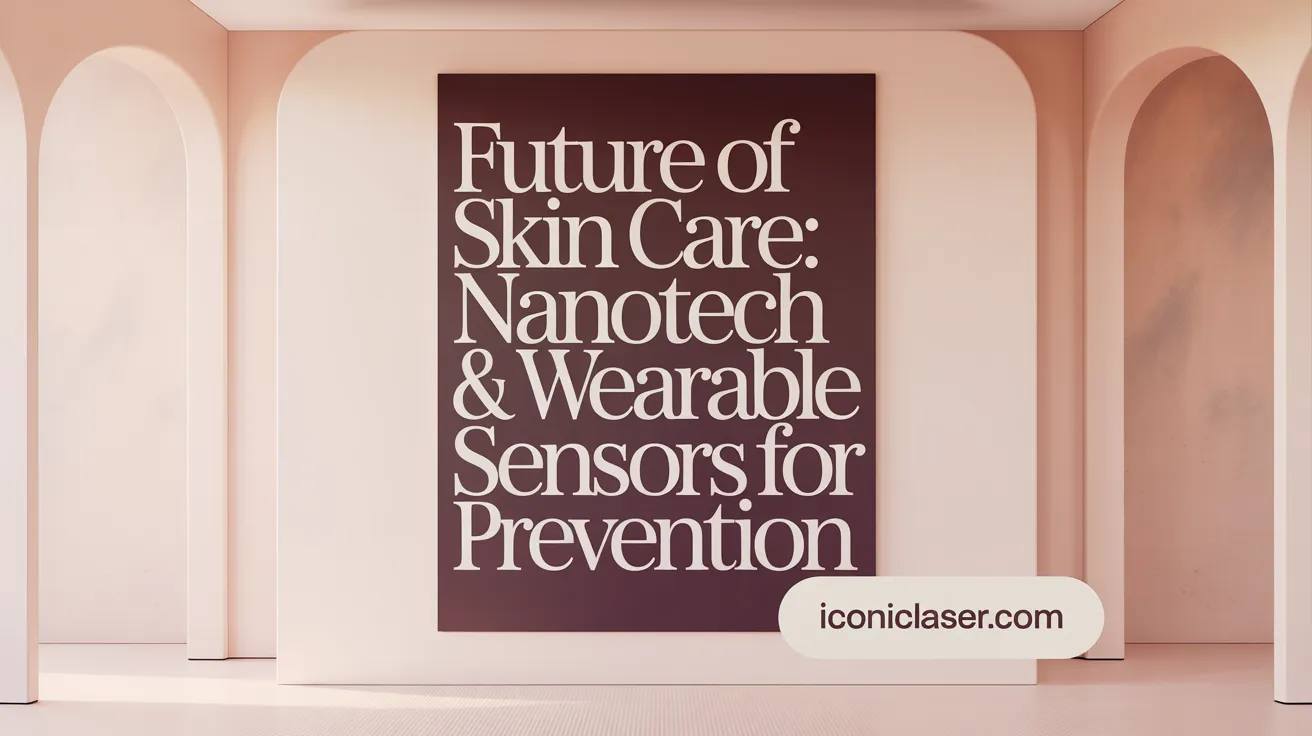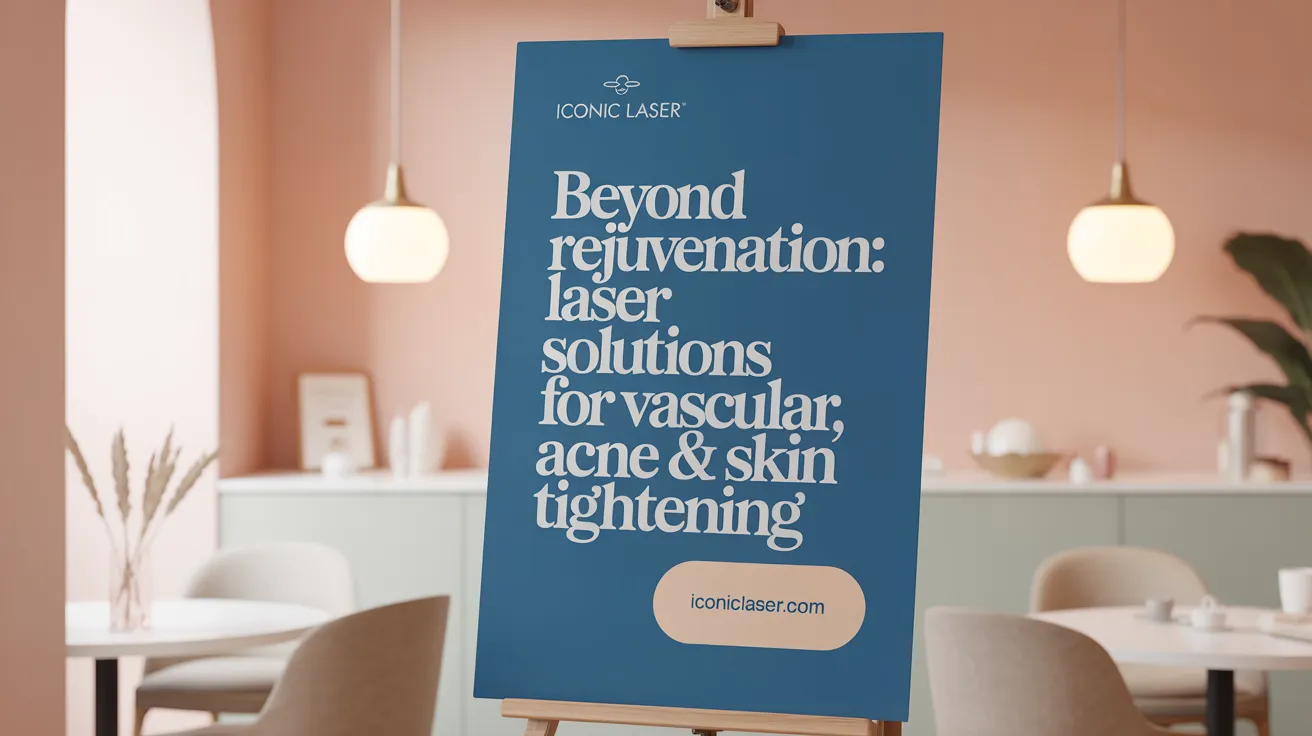Introduction to Cutting-Edge Laser Technologies in Dermatology
Recent Technological Breakthroughs in Dermatology
Advances in dermatology have been transforming skin care and treatment through the integration of high-tech innovations. Tools such as artificial intelligence, robotics, and health sensors now augment clinical capabilities, enabling earlier detection and precision therapy. These technologies complement established aesthetic procedures, expanding options for safer and more effective outcomes.
Role of Laser Technologies in Skin Care and Rejuvenation
Laser therapies play a pivotal role in modern dermatology, addressing various concerns from acne and pigmentation to aging and scar reduction. Clinics like StarkMD in Troy, Michigan offer diverse laser treatments including fractional resurfacing, hybrid fractional lasers, and non-invasive tightening techniques. These systems utilize technologies such as dual wavelengths and fractional ablative beams to tailor interventions per patient needs while minimizing downtime.
Importance of Personalized Treatment in Advanced Dermatology Clinics
Personalized care remains fundamental in achieving optimal results in laser dermatology. Board-certified dermatologists perform thorough consultations, considering skin type, medical history, and aesthetic goals to select the best treatment protocols. This approach improves safety and efficacy, enhancing patient satisfaction. Facilities in Troy, MI emphasize expert guidance and customizable treatments to address each unique skin condition with precision and care.
Advanced Laser Treatments for Skin Rejuvenation and Texture Improvement

What are the most effective treatments for skin rejuvenation offered by advanced medical aesthetic clinics?
Advanced medical aesthetic clinics utilize a variety of Laser skin resurfacing treatments techniques designed to stimulate collagen production and encourage cellular renewal, effectively improving wrinkles, scars, sun damage, and uneven skin tone. Among the most effective treatments are Moxi laser treatment, Halo laser treatment, and ProFractional laser resurfacing.
Overview of laser skin resurfacing techniques
Laser skin resurfacing can be broadly categorized into ablative and non-ablative types. Ablative lasers remove the outer skin layer for dramatic improvement but require longer healing periods. Non-ablative lasers, conversely, work beneath the skin surface to stimulate collagen growth with minimal downtime. Fractional ablative lasers, which target small skin sections, offer a balanced approach with effective results and reduced recovery time. These methods are part of the Advanced laser dermatology services in Troy, Michigan offered by clinics in Troy, Michigan.
Description of specific laser systems like Moxi®, Halo®, ProFractional®
- Moxi®: A gentle laser suitable for all skin tones including darker complexions; ideal for beginners with minimal downtime. Refer to Moxi laser treatment.
- Halo®: Employs hybrid fractional technology with dual wavelengths, best for treating sun damage and uneven tone but less ideal for very dark skin tones. Learn more about Halo laser treatment.
- ProFractional®: Provides customizable depth laser treatment effective for aging signs, scars, and wrinkles with results lasting 3 to 5 years. Details available at ProFractional laser resurfacing.
Suitability for different skin tones and conditions
Moxi® is particularly noted for its compatibility with all skin types, including darker tones. Halo®, while highly effective, is recommended cautiously for very dark complexions. ProFractional® allows tailoring of laser penetration depth, making it versatile across skin types and conditions such as fine lines, wrinkles, and scars. This information aligns with Laser skin resurfacing Troy Michigan suitability recommendations.
Healing time and downtime considerations
Treatment durations typically range from 30 to 90 minutes depending on the area and type of laser used. Moxi® treatment involves minimal downtime, suitable for those with busy lifestyles. ProFractional® healing ranges from 10 to 21 days with social downtime of 5 to 14 days. Post-treatment care includes protecting the skin with broad-spectrum SPF 30+, moisturizing, and gradual resumption of skincare products. For comprehensive guidance, see Post-treatment care for laser resurfacing.
Personalization of laser treatments for individual needs
Clinics emphasize personalized consultations to assess skin type, medical history, and treatment goals. Selecting the right laser system and protocol ensures safe, effective rejuvenation tailored to individual needs. The integration of advanced devices and expert clinical evaluation maximizes outcomes with safety. Explore more at Personalized dermatological care in Troy.
| Laser System | Target Concerns | Suitability & Features | Downtime |
|---|---|---|---|
| Moxi® | Mild resurfacing, uneven tone | All skin tones, beginner-friendly, minimal downtime | Minimal |
| Halo® | Sun damage, uneven skin tone | Hybrid fractional; caution on very dark skin | Moderate |
| ProFractional® | Wrinkles, scars, aging signs | Customizable depth, broad suitability | 5-14 days |
These advancements reflect the ongoing evolution in laser technology, providing safe, tailored, and effective skin rejuvenation options for diverse patient needs.
Robotics and AI Integration Enhancing Laser Dermatology Precision

How are robotics used in laser therapy treatments?
Robotic arms are increasingly incorporated into robotics in laser therapies to improve precision and treatment outcomes. These robotic systems assist in delivering targeted laser energy, offering superior accuracy compared to manual application. This technology minimizes damage to surrounding tissue while effectively treating conditions such as scars, wrinkles, and pigmentation disorders.
What AI diagnostic tools are available for skin cancer and lesion detection?
Artificial intelligence (AI) algorithms have become pivotal in dermatological diagnostics. For instance, a collaborative project between Stanford University and Google developed an AI algorithm capable of diagnosing skin cancer by analyzing over 1.28 million images covering more than 2,000 diseases. This technology enhances early detection accuracy and assists clinicians in making informed treatment decisions.
How do 360-degree skin lesion mapping systems work?
360-degree skin lesion mapping systems utilize advanced imaging to perform comprehensive scans of the entire body surface. These systems create detailed maps of skin lesions, facilitating early detection and monitoring of suspicious areas. This approach improves skin cancer detection rates while providing a thorough baseline for ongoing patient assessment.
What impact do digital and robotic technologies have on treatment outcomes?
The integration of robotics and AI significantly improves treatment precision, diagnosis speed, and patient safety. Robotics enable consistent delivery of laser therapy with reduced human error. AI enhances diagnostic accuracy by analyzing vast datasets, surpassing traditional pattern recognition. Together, these technologies contribute to more personalized, effective, and minimally invasive dermatological care.
Nanotechnology and Wearable Sensors Advance Preventive Skin Care

What is the role of nanotechnology in UV protection and anti-aging products?
Nanotechnology plays a transformative role in modern skincare by enhancing the effectiveness of UV-light absorbing sunscreens and anti-aging products. Nanoparticles in skin care are engineered to absorb and block UV rays efficiently, offering superior protection against sun damage compared to traditional sunscreens. This technology helps formulations to be lightweight, non-greasy, and more cosmetically elegant, making daily sun protection more appealing and practical for users. Additionally, nanomaterials are utilized in anti-aging products to improve skin penetration of active ingredients, promoting effective skin rejuvenation medicine delivery and combating the visible signs of aging.
How do nanoparticle delivery systems work for topical treatments?
Nanoparticle delivery systems facilitate the targeted and controlled release of skin care medicines, such as retinoids and antioxidants in topical delivery of medicines with nanoparticles. These minuscule carriers help transport active compounds deeper into the skin layers, enhancing bioavailability and maximizing therapeutic outcomes. This approach reduces irritation and increases the efficiency of treatments addressing skin aging, inflammation, and even skin cancer. By improving stability and penetration, nanoparticles support advanced formulations that are both safe and effective for long-term skin health.
What are wearable sensors and how do they monitor sun exposure?
Wearable sun exposure sensors are innovative, health-monitoring devices designed to track ultraviolet (UV) radiation exposure in real time. An example includes Loreal sun sensors that alert users about their current sun exposure levels, helping them manage the risk of sunburn and skin damage. These devices enable personalized sun safety by notifying users when protection is needed or when their exposure is approaching harmful levels. They serve as an accessible, daily monitoring tool for proactive skin care.
How does innovative technology aid in skin cancer prevention and skin health maintenance?
The integration of wearable sensors with nanotechnology-based skincare offers a comprehensive approach to preserving skin health and preventing skin cancer. Wearable devices provide immediate feedback on UV exposure, driving timely protective behavior such as applying sunscreen or seeking shade. Concurrently, nanoparticle-enhanced sunscreens and topical treatments provide effective barriers and repair mechanisms against UV-induced damage. Collectively, these technologies empower individuals with data-driven skin protection and advanced skincare products, optimizing preventive care in dermatology.
This synergy of nanotechnology and wearable sensors represents a significant leap forward in preventive dermatology, combining cutting-edge science with user-friendly applications to promote healthier, longer-lasting skin.
Laser Applications Beyond Rejuvenation: Vascular, Acne, and Skin Tightening Treatments

Laser treatments for vascular lesions, spider veins, and rosacea
Advanced laser systems such as ClearV vascular lesion treatment effectively target vascular lesions including spider veins and rosacea. These lasers selectively target blood vessels, reducing redness and visible veins with typically 1-3 treatments, yielding results that last several years. Such procedures enhance skin clarity and tone without invasive surgery.
Effectiveness of Forever Clear BBL® for acne management
Forever Clear BBL acne treatment is a light-based therapy designed for inflammatory acne. It minimizes redness and inflammation with minimal side effects and usually requires 3-4 sessions. This treatment offers a non-invasive option for acne-prone skin, promoting clearer complexions and complementing other dermatologic care.
SkinTyte® and other non-surgical skin tightening options
SkinTyte skin tightening employs light-based technology to stimulate collagen production, providing a non-surgical solution for skin tightening. It is especially beneficial for addressing early jowling and mild to moderate skin laxity. Results from SkinTyte® can last several years, supporting natural skin firmness with little downtime.
How laser technologies contribute to comprehensive dermatological care
Laser therapies extend beyond skin rejuvenation by addressing specific concerns such as inflammation, vascular irregularities, and skin laxity. Their precision and adaptability allow personalized treatments based on skin type, condition, and patient goals. When combined with other innovations in dermatology, including Advanced laser dermatology services in Troy, Michigan and emerging Future of Dermatology, these technologies form an integral part of holistic skin health management.
How can facial enhancement treatments improve appearance?
Laser treatments targeting vascular lesions like spider veins and rosacea, as well as inflammatory acne via Forever Clear BBL acne treatment, reduce redness and inflammation, enhancing overall complexion. Non-surgical skin tightening procedures such as SkinTyte skin tightening stimulate collagen to lift early jowling and laxity. Together, these therapies refine facial contours and improve skin texture, contributing to a rejuvenated, balanced appearance with minimal downtime and natural-looking results. For more on the latest Advanced laser skin treatments, consult qualified dermatology clinics like the StarkMD medical aesthetic clinic.
Comprehensive Dermatology Services and Women’s Wellness in Modern Clinics

What body contouring options are available at premium medical aesthetic clinics?
Premium clinics such as those in Troy, Michigan, offer various non-invasive body contouring options. Techniques like CoolSculpting, radiofrequency, ultrasound therapy, and laser lipolysis body contouring are popular choices. These treatments efficiently eliminate localized fat deposits and tighten loose skin without surgery. When integrated with laser skin resurfacing and rejuvenation procedures, they provide a comprehensive approach to enhancing body shape and skin quality. Personalized treatment plans ensure optimal outcomes tailored to individual patient needs.
What women’s wellness services are typically provided by medical aesthetic clinics?
Modern medical aesthetic clinics extend beyond skin care to include vital women’s wellness services. These offerings often include hormonal therapy aimed at restoring hormonal balance and improving overall health. Vaginal rejuvenation treatments enhance tissue elasticity and comfort, helping address issues related to aging or childbirth. Additionally, pelvic floor therapy and sexual health treatments promote physical well-being and quality of life. Such holistic services are designed to complement dermatological care, providing patients with integrated support for their health and appearance.
How is telemedicine integrated into dermatological care?
Telemedicine has become an essential component of contemporary dermatology. Many clinics provide virtual consultations, allowing patients to receive expert evaluations and follow-up care remotely. This technology enhances convenience, expands access to specialized care, and supports continual skin monitoring, including personalized treatment adjustments. Telemedicine also facilitates early detection of skin conditions through digital technologies in dermatology and empowers patients in managing their skin health from home.
What characterizes personalized, expert-led care models in premium aesthetic clinics?
Premium aesthetic clinics emphasize personalized care, led by board-certified dermatologists with extensive expertise. Initial consultations involve thorough assessments of skin type, medical history, and aesthetic goals to develop individualized treatment protocols. Expert teams use advanced technologies and tailor therapies to meet unique patient needs, ensuring safe and effective outcomes. This patient-centered approach fosters trust, enhances treatment satisfaction, and integrates innovations such as AI diagnostics in dermatology and cutting-edge laser technologies to maintain high-quality dermatology services.
Future Directions in Laser Dermatology for Optimal Patient Outcomes
Expectations for Ongoing Advancements in Laser and Digital Technologies
Laser dermatology is rapidly evolving with integration of AI-driven diagnostics, robotic precision in laser delivery, and novel fractional ablative techniques enhancing treatment efficacy while minimizing downtime. Emerging innovations, such as synthetic skin via 3D printing and wearable health sensors, promise enhanced monitoring and personalized interventions.
Importance of Integrating Innovative Treatments in Personalized Care
Tailored laser treatments, combining the latest technologies like hybrid fractional lasers and AI skin-mapping, enable dermatologists to customize approaches based on individual skin types and conditions. Personalized plans improve safety, outcome predictability, and patient satisfaction, reinforcing the role of expert consultation.
Emphasis on Safety, Effectiveness, and Minimal Downtime in Patient Care
Modern laser therapies prioritize patient safety with advanced cooling, precise control of laser parameters, and non-invasive methods to reduce complications. Recovery times are shortened through fractional technology and gentle laser systems, supporting rapid skin healing and minimal disruption to daily life.
